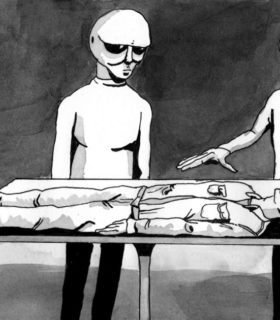What’s the last subcultural movement you can think of? When was the last time something inspiring happened in fashion, music, art, film, or literature? What mass movement of youth, fashion, politics, and music last got—and held—your attention? When was it last really a ‘thing’? The 2000’s? The 90’s? Earlier? What’s the most recent subculture you can name?
Rave culture? That started in the late 80’s. It’s a tired old thing by now, inhabited by fifty-year-old acid casualties who still think taking MDMA in a damp barn is going to change the world. Even rave culture was just a rehash of hippy culture, with the same drugs and slightly better music.
Nu-metal? Nu-punk? You can argue endlessly over whether those are separate to their originators, new takes, shallow imitations, or just an over-extension of the New York hardcore scene. That was the 90’s too, as was the goth revival, industrial music, and even the origins of emo. (though emo didn’t enter the popular consciousness until the early 2000’s)
Since then, what?
Scenesters? Hipsters? Both have been around forever under a variety of names. They are nothing new or unique. In fact, they are easily identifiable, and only ever about vanishingly ephemeral things, be it the past in general, a Friday night at the club, or a few days at Burning Man.
This is our first clue, perhaps. Everything seems to be a rehash, remodel, remix, or retread. Endlessly and forever, people are doing the same old things, treating the history of youth culture as a buffet from which they can pick and choose whatever stale trend they want.
For example, say that you pass a girl on the street. She’s wearing Doc Martens, anime leggings, a plaid rah-rah skirt, a Star Wars t-shirt depicting Princess Leia as Tank Girl, and a leather biker jacket. Her hair is undercut, faded, dyed a washed-out green, and gelled into a half-hearted mohawk.
What can you tell about her?
Almost nothing.
The language of fashion, music, and pop culture have utterly collapsed. Not so long ago, a dyed mohawk might have meant someone was alt, punk, arty, libertine, maybe kinky—a sign that they were one of your tribe. Now, it’s as likely to be a warning sign as anything else, a bright “Do Not Touch” sign in the language of poison-arrow frogs and noxious caterpillars.
Culture moves fast, and it does not forget. With near-total fidelity and full records of even ephemeral cultural artifacts, there is no chance of novelty. It often seems like everything has been done before—and it probably has. Kids in the past could fool themselves that they were doing something new because it was new to them.
There was no taboo in claiming or remixing material from other cultures, which allowed the creation of rock and roll as a syncretic amalgam of gospel, blues, and jazz. Yet now that cultural appropriation is a mortal sin, anything but slavish devotion to traditional or pre-existing forms of artistic expression cannot thrive. Weirdly, this comes as much from left-wing dogma about marginalized cultures as it does from right-wing nostalgia. It is as much due to paternalistic coddling as it is to paranoia over the “death of the West.”
With everything being an echo of the past; and with kids picking, choosing, and mixing their styles, musical tastes, and politics; you can’t identify your “tribe” on sight. With culture and commodification rushing onward ever faster, no subculture can ever get a chance to legitimately challenge the mainstream. With the absoluteness of the Internet record, finding out that your “new idea” is actually a very old one is one Google search away. So why even bother?
Subcultures are insular, defining themselves in opposition to the predominant culture. They are occulted from it through their language, styles, and other peculiarities. They are not meant to be accessible to everyone; they require initiation and shit-testing (and that’s a polite way to put it) for admittance. These are things that are anathema to the “over culture” now, forged as it is in the relentless glare of social media.
Our culture is open now; everything is on show. To be secretive is to be untrustworthy. To “shit-test” or gatekeep is to fail to be inclusive, and that is a mortal sin in this new world.
Image boards are a microculture, even though at 22 million viewers per month, 4chan can hardly be called small. A casual visitor, a “normie,” is likely to be turned away by the perceived brutality and ironic racism of the place—and that’s how they like it.
I guess that is all we have left then: microcultures. Less a tribe and more of a kin group. The handful of people we show our true, uncurated face to, or the few places where our anonymity is secure. I doubt we’ll see another real, mass-movement subculture in our lifetime. Whatever novel and fascinating cultural artifacts emerge from our era may even be better of as secrets, known only to a select, curated audience.
If you find something fresh or new, keep it to yourself and those you trust implicitly. Novelty is too precious to share.
James ‘Grim’ Desborough is the Video Guy at Trigger Warning and a rapidly ageing gothabilly. He is also an eminent atheist and libertine who spends his time writing, editing, and designing analogue games.


